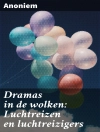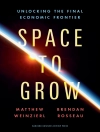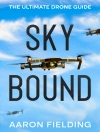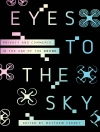Are you aware of the pressing issue of space debris and its potential risks to human spaceflight?
Whether you’re a curious mind, a space enthusiast, or an aspiring space traffic manager, this handbook is an essential companion for the mind journey in the vast expanse of space.
The handbook provides a historical overview of our journey beyond the Earth, allowing you to gain insights into the origins of space debris and its consequences. You’ll also learn about the vulnerabilities of satellites and the importance of space acronyms like LEO (Low Earth Orbit), MEO (Medium Earth Orbit), and GEO (Geostationary Orbit).
As you explore the evolution of space traffic management and the international landscape of space governance, you’ll gain clarity on new policies and regulations surrounding space debris.
Ultimately, this handbook prompts reflection on our cosmic legacy and the consequences of the Wild West approach to space matters.
Don’t miss out on the opportunity to understand the intricacies of space sustainability – you don’t need to be a rocket scientist to do so!
Innehållsförteckning
Contents
Introduction
Milestones in human space exploration
Space Objects Chronicles
Salyut Space Stations
Skylab Space Station
Mir
The International Space Station
Tiangong Space Station
Communication Satellites
Remote Sensing Satellites
Navigation Satellites
Scientific Satellites
Deep Space Probes
The Debris Swarm
The Kessler Syndrome
Satellite Vulnerability
Risks to Human Spaceflight
Down-to-Earth Consequences
Celestial Highways
Navigating the Layers of Space
Lagrange points
Bring order to chaos
The History of Space Traffic Management
Space traffic management notions
Space Traffic Coordination
Orbital Slot Allocation
Collision Avoidance and Maneuver Planning
Space Surveillance and Tracking
Debris Mitigation Measures
Information Sharing
The Path to Harmony
The U.N. and the Outer Space Treaty
New Policies and Regulations
Clearing the haze
Emerging Technologies and Innovations
Our Cosmic Legacy
Om författaren
Working on European law, Cristian started as an Eastern European kid looking up and wondering what those specks of light might be moving like distant spaceships. His path led him to understand orbital mechanics and space traffic management; the passion became a job and led to policy proposals. The desire to share knowledge in an accessible way led to a book that would inspire and educate anyone who looked up at the stars and wondered.












